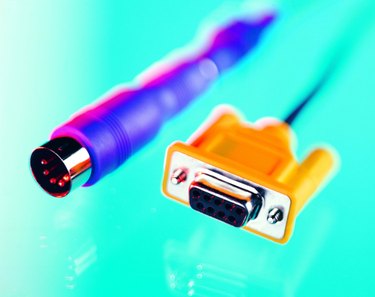
While laptop computers are convenient due to their portability and versatility, the size of the keyboard and display can be a significant drawback on the smallest machines. If you need a bit more viewing real estate to get your work done effectively, figure out what connections the laptop supports so that you can attach an external monitor.
Check the Connections
Video of the Day
Most laptops will have one of three connectors on them: VGA, DVI or HDMI. When you choose a monitor to hook up to your laptop, you need to ensure that the monitor has compatible connectors. VGA is the most common connector, while HDMI is found on high-end monitors and displays.
Video of the Day
VGA, DVI and HDMI
VGA can be found on most monitors that are used in homes and businesses. To connect an external monitor to a laptop with VGA, you simply need a VGA cable, which is usually inexpensive.
DVI and HDMI connections allow for a sharper picture quality than VGA. DVI cables are more expensive than VGA, while HDMI is the most expensive. The advantage of HDMI, though, is that you can hook up any television with an HDMI port to your laptop, allowing you to have some pretty large monitors.
Letting Windows Know
Windows XP and later versions, as well as most Macintosh operating systems, will automatically display the second monitor as a mirror of the first, although sometimes you may need to push a combination of Function keys. The exact combination will vary by computer model.
If you want to extend the display rather than mirror it, you can right-click on the main desktop, click "Properties," and then click "Display Properties." From there choose "Settings" and select the second monitor. Choose "Extend my Windows Desktop" and select "Apply." You should now be able to move windows between monitors.
Docking Stations
Some laptops offer the optional attachment of a docking station, or port replicator. To attach an external monitor, you simply hook the monitor to the docking station with a VGA or DVI cable and then put your laptop onto the docking station. The desktop will automatically transfer to the external monitor. You can also hook up keyboards and mice to docking stations to enhance the desktop experience.